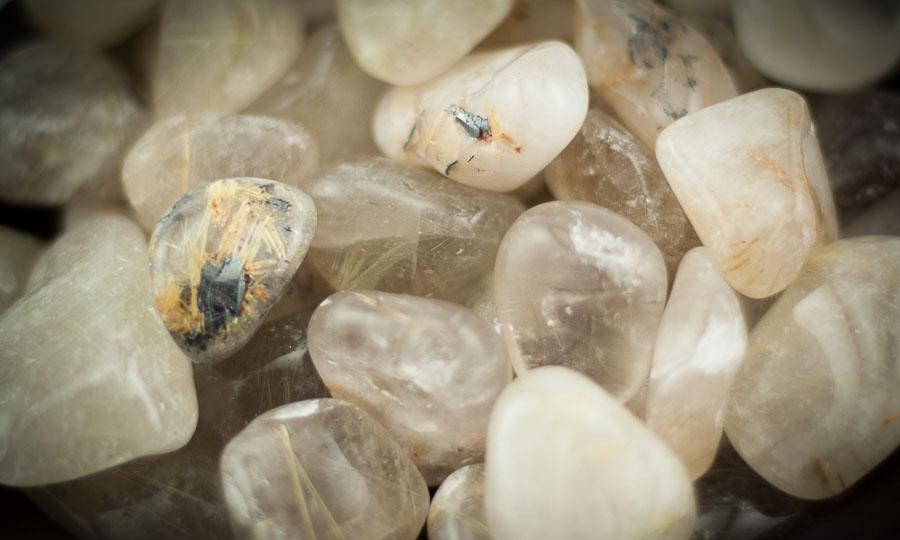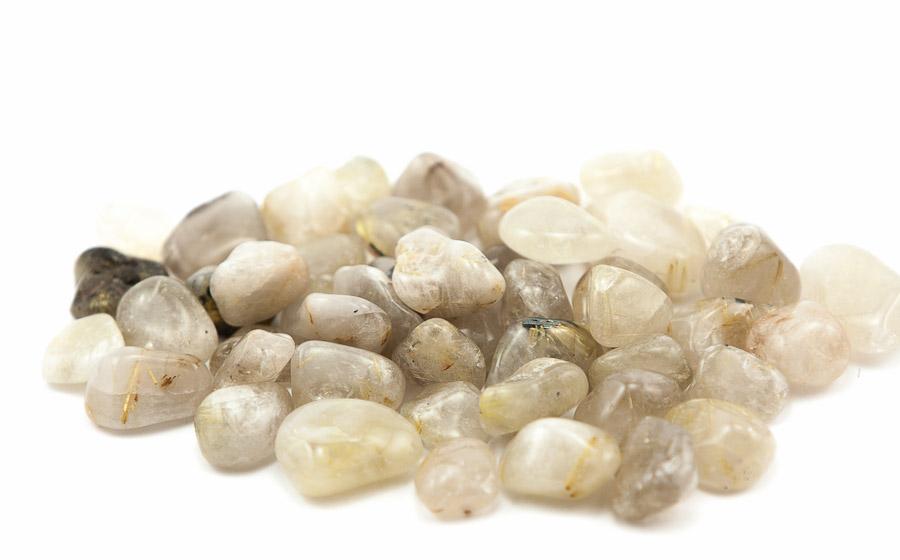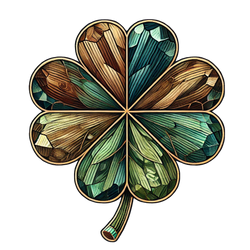You will not be allowed to compare more than 4 products at a time
View compareRutile Tumbled 1 lb
Rutile Tumbled 1 lb
Estimate delivery times:5-8 days.
Flat Rate Shipping and FREE Shipping on orders more than $100.
About This Product
Rutile – Threads of Golden Light
Rutile reveals itself as radiant, needle-fine crystals that glow like threads of sunlight frozen in stone. Each filament of rutile shimmers with a golden to coppery gleam, often seen suspended inside clear quartz – as in the classic Venus’s-hairstone quartz – or clustered in acicular sprays on its own matrix. These delicate inclusions give an ethereal display, as if nature spun filaments of pure light and wove them into the heart of a crystal. In larger aggregates, rutile’s needles can take on reddish or bronzed hues, their lustrous strands evoking the image of divine light captured and crystallized.
Historical and Cultural Significance
Since antiquity, rutile’s golden inclusions have captivated the human imagination. Ancient Greeks and Romans marveled at clear quartz filled with golden rutile, calling it the Hair of Venus or Aphrodite, believing strands of a goddess’s hair were preserved in crystal. Indeed, quartz containing rutile needles has been cherished as an ornamental gleaming treasure since ancient times and was particularly prized in 18th-century Europe. The mineral itself was later named Rutile (from the Latin rutilus, “red”) in 1803 by geologist Abraham Werner, alluding to the deep reddish flashes seen in some specimens. In the art world, rutile quietly made history as well – finely powdered rutile yields a brilliant white pigment (titanium white) that revolutionized painting palettes in the 20th century, offering a non-toxic, luminous white beloved by artists. Meanwhile, scientists were entranced by rutile’s optical prowess: with one of the highest refractive indices known, rutile crystals found use in advanced optics and early experiments in polarization. (In fact, mid-20th-century gem laboratories grew synthetic rutile, sold as “Titania,” to mimic diamond’s fiery dispersion.) From ancient myth to modern technology, rutile has woven a golden thread through culture – symbolizing beauty, innovation, and the enduring allure of light.
Metaphysical Symbolism
Mystics and crystal healers revere rutilated quartz as a stone of amplified energy and divine illumination. The thin golden needles of rutile are said to intensify the host quartz’s energy impulses, “illuminating the soul with cosmic light”. Many call rutilated quartz “The Illuminator,” believing it awakens self-awareness and spiritual development by channeling a higher vibrational light. In metaphysical lore, rutile is a catalyst for transformation – it is thought to clear energy blockages and accelerate personal growth with its radiant frequency. Golden rutile’s energy is often described as bridging heaven and earth: it connects the Solar Plexus Chakra (personal power) with the Crown Chakra (enlightenment), linking one’s willpower to divine inspiration. This synergy of chakras is believed to empower intuition and facilitate spiritual awakening. Meditating with rutile-infused crystal is said to amplify one’s intentions and prayers, magnifying the manifesting power of thought. Healers also speak of rutile as a beacon of divine light that infuses the aura, promoting clarity of thought, intuition, and a profound sense of inner guidance. In essence, rutile symbolizes the illumination of the higher self – a shimmering ladder of light aiding one’s ascent to greater wisdom and enlightenment.
Decorative and Luxury Appeal
Rutile’s unique beauty has made it a darling of jewelers and collectors alike. In contrast to most gemstones where inclusions are flaws, rutilated quartz is valued because of its inclusions – each stone is utterly unique, patterned by nature’s artistry. Fine needles of gold, red, or even black rutile crisscross within colorless quartz, creating striking visuals that designers turn into exquisite jewelry pieces. Polished into a cabochon or faceted into a gem, rutilated quartz becomes a conversation piece shimmering with internal strands of gold. In fact, this gem is often nicknamed “Venus Hair,” “Cupid’s Arrow,” or “Goddess Tresses” for its hair-like golden inclusions and almost supernatural sparkle. Set in luxurious gold or platinum, a rutilated quartz ring or pendant exudes bohemian elegance and cosmic glamour – each filament catching the light like a sliver of sunlight trapped in ice. Beyond jewelry, artisans also carve and polish rutile-bearing quartz into mesmerizing décor items: orb paperweights that glow from within, or obelisks and figurines that seem to contain captured fire. Such pieces bring a luminous, upscale aura to any collection or interior.
Not only jewelers, but mineral collectors also prize the dramatic beauty of rutile in its raw form. Certain rare specimens feature radiating sprays of acicular rutile crystals grown in tandem with other minerals – for example, the classic rutile-on-hematite combos from Novo Horizonte, Brazil display bright golden needles fanning out against jet-black metallic hematite. These natural sculptures are highly sought after, often becoming centerpieces in fine mineral collections. Connoisseurs delight in how the rutile’s metallic luster contrasts with host minerals, creating visually stunning mosaics of color and texture. Even in famed sapphires and rubies, tiny rutile fibers manifest as a star-like sheen; cutters sometimes leave this “silk” intact to produce prized star stones that fetch premium values. Whether showcased in a museum case or worn on the body, rutile-bearing gems and specimens embody a luxurious union of earth and light – each a testament to nature’s ability to create art rivaling any human handiwork.
Scientific Profile and Properties
-
Chemical Composition: Titanium dioxide (TiO₂) – rutile is the most common natural form of TiO₂.
-
Crystal System: Tetragonal (prismatic crystals with a ditetragonal dipyramidal habit).
-
Mohs Hardness: 6 to 6.5 (fairly hard but not ideal for everyday wear, as it can be scratched by harder gems).
-
Color Range: Typically golden yellow, red to reddish-brown, coppery orange, or near-black. The name rutile comes from “red” for the deep reds seen in some needles, and black varieties occur when high in iron, niobium, or tantalum.
-
Transparency: Opaque in bulk; translucent to transparent in thin needles or inclusions. (Rutile inclusions in quartz are often translucent and gleam best in transmitted light.)
-
Luster: Adamantine (brilliant, diamond-like) on fresh crystal faces, often with a metallic sheen. Fine rutile needles can appear silky or shiny within a host quartz.
-
Cleavage/Fracture: Prismatic cleavage on {110} (good) and {100} (moderate); fracture is uneven to sub-conchoidal. Crystals tend to be brittle due to pronounced cleavage.
-
Optical Phenomena: Exhibits asterism when included in certain gems – oriented rutile fibers cause the star effect in star sapphires and star rubies. Densely packed parallel needles can also produce chatoyancy (cat’s-eye effect) when such stones are cut en cabochon. In clear quartz, rutile inclusions display brilliant internal reflections, appearing to light up from within as the stone is moved.
-
Primary Sources: Notable for its occurrence in high-grade metamorphic and igneous environments worldwide. Brazil (especially Minas Gerais) and Madagascar are famed for abundant golden rutilated quartz specimens. Significant deposits of rutile also come from heavy mineral sands in Australia and South Africa, and from crystalline metamorphic belts in the USA (e.g. Arkansas and Virginia). Other sources include India (a major supplier of rutilated quartz gems), as well as the Ural Mountains of Russia and parts of Kazakhstan (notably in certain titanium-rich ore bodies).
-
Identifying Features: Rutile is distinguished by its slender, needle-like crystal habit (often hair-like inclusions in other minerals) and its unusually high density (~4.2 g/cc, making even small crystals feel surprisingly heavy). It leaves a diagnostic streak of bright reddish-brown on porcelain. With a refractive index up to ~2.90 and very high dispersion, rutile crystals have an adamantine sparkle; synthetic rutile gems famously exhibit a fiery “rainbow” brilliance akin to diamond. These properties, combined with its acicular form and vivid internal reflections, make rutile readily identifiable to gemologists and mineralogists alike.
Each piece of rutile, whether a microscopic inclusion or a standalone crystal, carries a tangible piece of the sun’s radiance within it. Luxurious, luminous, and metaphysically profound, Rutile bridges the gap between the scientific and the spiritual – a gemstone that is as much a marvel of geology as it is a beacon of light and inspiration for the human soul.
Sub total:
$18.49





 $44.49
$44.49 $16.49
$16.49